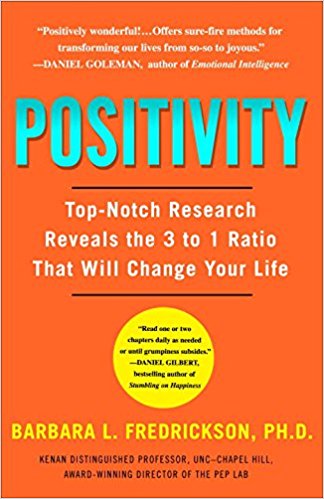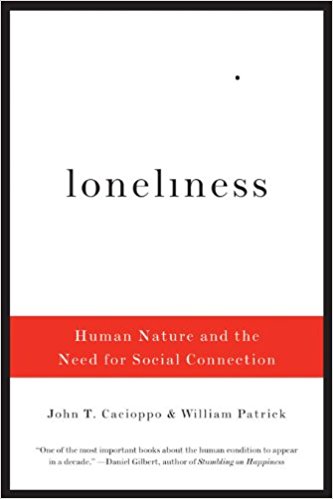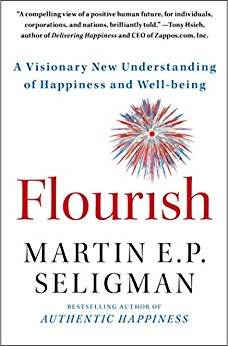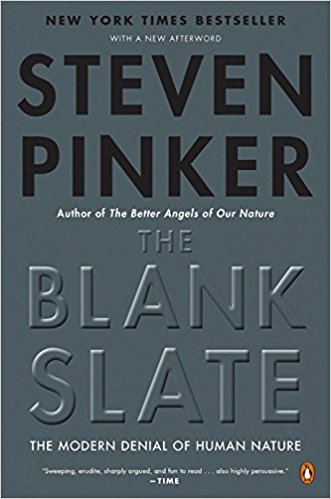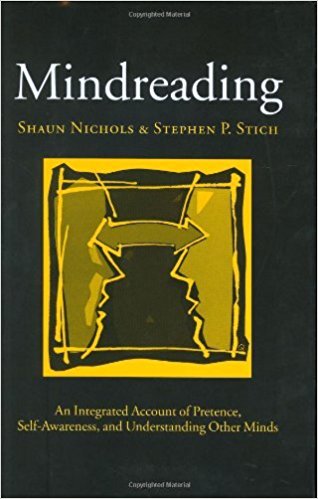Robert Bogue
January 1, 2018
No Comments
There are plenty of reasons to study Martin Seligman’s work. The foremost authority on positive psychology, former president of the American Psychological Association (APA), and longtime researcher provides plenty of reasons to pay attention. However, the most compelling reason for me was one of kindred spirit. In the close of the book, he admits to starting the book not to write a book. He was trying to refine his thinking, and the writing process did that. He used the writing process to crystalize what he was thinking. That’s a process that I use in writing my book reviews. So, though I didn’t discover it until the end, he wasn’t trying to deliver a book to drive a cash machine, he was trying to develop and share his thoughts – I respect that.
Flourish is a book about how to take what we have in life and make it better. It’s a sign post that points down the road of happiness and fulfillment. It represents a lifetime of thinking about how wellness is not the absence of illness. It’s a clarity that the value of life isn’t in your bank account, your house, cars, or things. The value of life is in how you live it.
Authentic Happiness Recapped
In Authentic Happiness, Seligman asserts that three elements lead to happiness: positive emotion, engagement, and meaning. Engagement, Seligman explains, is about flow. (For more on flow, see The Rise of Superman, Flow, and Finding Flow.) Meaning is a part of Pink’s idea of motivation, as expressed in Drive. Pink calls it “purpose” and is clear that purpose doesn’t need to be changing the world. It just means something that’s important to the person.
That leaves us with the positive emotion component. Seligman explains that “happiness” is inextricably bound up with being in a cheerful mood. This problem shows up when you ask people about life satisfaction, and they tend to respond related to their present mood rather than an overall satisfaction. It’s almost as if people can’t see the forest, because they’re standing too close to the trees.
One of the criticisms that Seligman levels against his own work is that it doesn’t address what people do for “their own sake.” This hearkens back to Aristotle and the difference between the means and the ends. That is, what are we doing just because we want to, and what are we doing in service of something else? What you do cannot serve another master for it to be the thing that brings you happiness. (However, the ends that you want can bring you happiness through the means of what you’re doing.)
The trick, it seems, is that, though as Aristotle said we all pursue happiness, that’s not what we really want. We want well-being. Well-being is a construct, and happiness is a thing. In my review of A Philosopher’s Notes, I discovered (but didn’t cover) the story of Lakshmi and Sarawati, which I covered in my review of The Heretic’s Guide to Management. The short version of the story is that Lakshmi is the goddess of wealth, who runs away when people pursue her. Her sister Sarawati is the goddess of knowledge. When you pursue her, the jealous Lakshmi comes running after you. In other words, seeking knowledge and wisdom leads to wealth, but seeking wealth directly leads to nothing. In this context, happiness is a fool’s errand. Happiness is found through well-being – not on its own. (I’ve read a lot about happiness – try Hardwiring Happiness, Stumbling on Happiness, The Happiness Hypothesis, and The Dalai Lama’s Big Book of Happiness for a few examples.)
Well-being
Seligman’s perspective is that well-being has five elements:
- Positive emotion
- Engagement
- Positive Relationships
- Meaning
- Accomplishment
He refers to these through the acronym PERMA. (Positive relationships is the R.)
Getting Outside of Yourself
If you were to sum up the things that make people happy, it could best be described as getting outside of yourself. Whether viewed through the lens of accomplishing something (outside of your own skin), the lens of meaning (beyond oneself), relationships (with other people, or performing a kindness for another person), the heart of happiness is getting beyond yourself.
Happiness research is split between those with a hedonistic happiness approach (live for the moment) and a eudaimonic happiness approach (live for meaning and self-realization – or value-based). The effects of hedonistic happiness are gone with the end of the experience. The effects of eudaimonic happiness are more long-lasting. (See The Time Paradox and The Happiness Hypothesis for more on this distinction.)
One of the problems that we seem to encounter in ourselves and others is the desire to patch up our poor emotional state with hedonistic approaches. We believe that we can change the way that we feel in a persistent way with a new item, a new trip, or something that we acquire. This thinking leads to the pull of addiction. (See Chasing the Scream for more on addiction.) It’s not nearly as easy or quick to find those ways to get outside of ourselves and change our persistent state of well-being.
To Be Loved
If you want to live longer, have better and more relationships. It is George Vaillant’s insight that the capacity to love has a companion: the capacity to be loved. These two together are capable of extending a person’s life. Together, loving and being loved are characteristics that make a difference.
This is expressed differently by others. Having intimate relationships would be the way that I’d describe it. (See Intimacy Anorexia and Trust=>Vulnerability=>Intimacy for more on intimacy.) Folks like J. Keith Miller in Compelled to Control express the ability to be loved as a feeling of being worthy and not being loved as a feeling of unworthiness. Let’s start with the need to feel worthy of love.
When I was getting my divorce, I was struggling with whether I was lovable. If this marriage didn’t work out, and God hates divorce, then what if I wasn’t lovable – what if I wasn’t worthy of love? (See God Loves You: He Always Has and Always Will for a good reset of this perspective.) Before I could be ready to be loved – to let it in – I had to accept that I was lovable. If other people are pouring love all over you, but you believe that you are at your core an unlovable person, then it will simply wash over you and go away.
In Spiritual Evolution, Dr. Vaillant speaks of a Dr. Carson (a pseudonym), who had glowing letters of love from his patients – that he couldn’t bring himself to read. (Yes, it’s the same Dr. Vaillant that Seligman speaks of in Flourish.) He couldn’t let that love in – he couldn’t hold it in his consciousness.
Social Evolution
The greatest evolutionary trick and adaption is the trick of socialization. Altruism, it turns out, can mean the survival of the species (see The Blank Slate and The Righteous Mind for more about altruism), whether it’s survival of chimpanzees (see Spiritual Evolution for survival of chimpanzees’ genes based on social skills) or survival of colonies of ants or bees (see The Dalai Lama’s Big Book of Happiness for more on insect altruism).
From insects to primates, we’re evolved to be social. So much so that Robin Dunbar noticed a correlation between prefrontal cortex in primates and the size of their social groups. (See High Orbit – Respecting Grieving for more on Dunbar’s Number.)
Generating Gratitude
If you want to be happier, be grateful. It doesn’t matter what you’re grateful for, gratitude has its own power. Studies confirm that the impact of keeping a gratitude journal is positive for your general mood. In truth, we often overlook small acts of kindness and small wins. However, it’s these small things that outweigh by volume the great evils that exist in the world. The Blank Slate quotes Gould describing “The Great Asymmetry” as “we perform 10,000 acts of small and unrecorded kindness for each surpassingly rare, but sadly balancing, moment of cruelty.” In other words, we can see the bad things that happen to us and around the world, because they’re big, bold, and easy. What is sometimes more difficult is to focus on and savor the small positive things that make up daily life.
It is certainly possible to create a gratitude journal and fill it with items that you’re grateful for without ever experiencing the positive mood. As we rolled through the American holiday Thanksgiving, our children could express appreciation for food and for shelter, but would do so in a way that’s entirely intellectual. “It sure would be bad if we were hungry.” Rather than bringing the feeling of warmth that comes from a meal and turning over the taste in their mind, the way that it made their tummy just a bit warmer. Experiencing gratitude is more than a checkbox. “I’ve got one more thing to do today to get a perfect score. I have to make three entries in my gratitude journal.”
Gratitude is something that must be experienced in its emotional state – not something that can be considered in a cold, sterile, rational consideration. When you allow the gratitude to dwell within you for a moment, it changes your outlook on the rest of life. Like water carving the Grand Canyon, the effects may not be immediately visible, but over time the impact can be enormous.
Curing Depression
Depression is the costliest disease in the world – at least according to the World Health Organization (WHO). With an average cost of $5,000 per year to treat, it’s simply expensive to treat the symptoms. The real tragedy is, however, that the psychiatry and psychology industries have given up on finding a cure.
All medicines can be classified as curative – they cure the disease – or cosmetic – they hide the effects. The medicines that we have available to us for depression are cosmetic. When the drug is removed, the symptoms return. Every single drug in the psychopharmacopoeia is cosmetic. The idea of curing depression has largely been abandoned. More concerning is that the efficacy of psychoactive drugs is only marginally better than placebos. (See Warning: Psychiatry Can Be Hazardous to Your Mental Health for the dangers of psychiatric drugs.)
The work on the behavioral side of treating depression has some positive points, but a cure is far from certain, with many people languishing in a depressed or near-depressed state for their entire lives. (See The Heart and Soul of Change: Delivering What Works in Therapy, Science and Pseudoscience in Clinical Psychology and House of Cards for more on what does and doesn’t work in therapy.) In fact, depression is about ten times more common now than it was fifty years ago. Once someone gets depressed, they’re tending to stay depressed.
Dealing with Dysphorias
Dysphoria is from the Greek language, and it means a profound state of unease or dissatisfaction. It is often a generic term to describe depression and anxiety. If the professionals have largely given up on curing depression, and many of the drugs that we have available to us have only marginally better results than a placebo, where does that leave us?
In short, it’s learning to deal with the dysphoria and continue to operate as best we can. It’s not quite “fake it until you make it,” but there is a degree to which we’re looking for people to behave in ways that are incongruent with their feelings. This might mean going to the store when you don’t feel like it. If we can help folks with depression to simply do healthy behaviors, it’s possible to halt the descent into the depths of depression.
The trick is that feelings and behavior aren’t a one-way street. It’s not that our feelings or moods cause our behaviors. Our behaviors can feed back into our moods. By doing the behaviors, it’s possible to influence the feelings and moods. Depending upon the severity of the problem and the degree of effort expended, it’s possible to reverse the effects of depression.
One problem that is often cited when people are “just dealing with it” is that they feel like they’re being fake. Often the perception is that they aren’t being real when they’re putting on “a happy face” and going about life. However, the truth is that they’re behaving as they want to feel. They’re not “faking it” as much as they’re making a conscious decision to pull their mood in the direction of happiness.
Negative Nelly
What makes some relationships feel like they’re life-giving but others sucking the life out of you? The answer may reside in part with the ratio of positive to negative comments. Relationships with a positive to negative ratio of 3 (2.9) up to 13:1 are positive. (Above 13:1 the positive comments aren’t believed.) The Losada ratio, as it is called, is corroborated by Gottman’s work with couples, who suggests that a 5:1 positive to negative comment ratio is necessary to keep a couple’s marriage healthy. (See The Science of Trust for more.)
While it seems like even higher ratios of positive to negative comments might be helpful, when the number gets above about 13, it begins to feel ingenuine. It seems like the negative comments are required to hold the relationship together – but in an appropriate ratio to the positive and affirming comments.
Values in Action Signature Strengths
At the heart of Seligman’s perspective on flourishing is the ability to use your strengths rather than focusing on your weaknesses. The Values in Action Signature Strengths test is available for free at www.authentichappiness.org. This test ranks the strengths that you have, indicating which strength the test believes is the most valuable in your life. The core concept is that you should focus your development efforts on making these strengths more powerful in your life.
While, in general, I agree that it’s a good thing to focus on strengths and avoid feeling shame about our weaknesses, I worry that Seligman’s approach may not lead to peak performance of humans. (See Peak for more.) Peak performers use coaches to help them see weaknesses in their performance that’s holding them back. I’m concerned that only focusing on strengths may lead us to believe that we don’t need to address our blocking weaknesses.
BAC
Blood alcohol content is abbreviated BAC; but so too is Our Beliefs (B) about an Adversity (A) – and not the adversity itself – cause the consequent (C) feelings. This is a subtle but important point. It’s not the problem, it’s how we react and respond to the problem, our fundamental beliefs about the adversity – or the situation – that really matter. A day can be good or bad based on our beliefs about it.
So if we want to change our feelings, we need to consider (and challenge) or beliefs.
Achievement = Skill * Effort
As was addressed in my review of Grit, a work ethic puts everyone ahead. We saw this in Peak as well. People need to work to get good at what they’re doing. Dweck echoes this same sentiment in Mindset. Everywhere we turn, we find the effects of work – or effort. Still, one could argue, skill has an impact on achievement. We can’t ignore that part of our simple equation – but we can when we consider that skill is the previous achievement. Skill is the outcome of the last time through the equation. So if we were to use basic algebraic substitution, skill is, at some level, some factor of effort.
All achievement is then based on effort and effort alone. Arguments will be made for natural talent, but scientists haven’t found enough natural talent to matter much when compared to the weight of effort on achievement. So, as we’re looking at our lives and trying to find ways to flourish, we need to try. We need to put our nose to the grindstone and work – to put the effort in.
Brake Specialists
When looking at flourishing, it seems odd to talk about holding back – and how holding people back can save them from themselves. Seligman recounts a story of a professor who learned to be slower. He quotes Dr. Ed Hallowell speaking to a child with ADHD: “You have a Ferrari of a mind, and I’m a brake specialist. I am here to help you learn to apply the brakes.” Anyone who has spent any time with a child afflicted by ADHD will tell you that a brake specialist is a great idea. However, how does this help them flourish? The answer seems to be in the idea of going slow – to go fast.
One of the greatest minds of our time, Albert Einstein, was – relatively speaking – slow. He wasn’t a gifted learner and he had to expend great effort to stay on task. He credited this need to stay on task to his ability to make such profound observations. Everyone else ran ahead, and they missed the implication of shining a flashlight while riding on a beam of light.
To be effective in our world, we sometimes need to slow down and stay with a problem long enough that we can thoroughly work through the problem.
For the Common Good
Everyone believes that Darwin thought that we were out for ourselves. After all, he said, “Survival of the fittest,” right? Yes – but only sort of. The unit of natural selection isn’t the individual. The unit of natural selection is the group. In fact, he said, “A tribe including many members who, from possessing in a high degree the spirit of patriotism, fidelity, obedience, courage, and sympathy, were always ready to aid one another, and to sacrifice themselves for the common good, would be victorious over most other tribes; and this would be natural selection.”
Said differently, it’s possible for selfless genes to replicate if they replicate through the rest of the tribe or social group. It’s possible that the best thing that a person can do to ensure the survival of their genes is to sacrifice themselves for their family. By extending the definition of family, what they do for their country, community, or friends, helps to preserve their genes even in their death.
Good, God
Sidestepping the issue of whether God does exist or not, people who have a higher level of spirituality have a greater well-being. Those who live by a code that includes serving others or believing that they’re a part of something larger has a positive effect on their well-being and reduces mortality. In The Blank Slate, Pinker claims that someone else praying for you seems to have no effect. However, praying for yourself seems to have an impact. Our belief in things larger than ourselves creates an opportunity for us to be happier.
Said sort of paradoxically, whether you believe in God or not, you should believe in God if you want to have a better and longer life. One could argue that the safest answer – not knowing for certain whether God exists or not – is to accept that God exists if for no other reason than to get the benefits in this life.
It’s All Pointless
We’ve all had those moments when we’ve wondered if all of our hard work has been pointless. Families whose homes are crushed by a tornado. Businessmen who see their fortunes washed away in a blink of an eye by a tsunami. Farmers who lose entire flocks of chickens due to infection. When our world comes crashing in with something beyond our control, it’s natural to wonder whether it makes any sense to go on. We have an illusion of control. (See Incognito.)
Sometimes reality confronts us with the truth that we are not in control. We only have the illusion of control. We live in a probabilistic world (see The Halo Effect), and we can’t guarantee outcomes. Some people get despondent after their world has been crushed. That’s normal before recovering. (See On Death and Dying for more of the cycle.)
PTSD
If you want to predict which soldiers are going to be afflicted with Post-Traumatic Stress Disorder (PTSD), all you need to do is assess them prior to the stress. The more mentally healthy they are, the more likely they’ll grow from a stressful experience. Those with good coping skills and a generally optimistic disposition will see some level of post-traumatic growth.
We’re back to the fact that it’s not the adversity that leads to the results – it’s our attitude about the adversity that matters. If the adversity as seen as temporary, changeable, and local, we’re more likely to grow as a result of a stress. It’s only optimism that predicted who would – and who would not – have a heart attack.
Great Men with Great Struggles
There are times that we think there can be no greatness in life without happiness, but some of the greatest leaders that this world has ever known struggled with depression and negative emotions. It wasn’t that there was no struggle or sorrow in their worlds. Rather it was this struggle that they turned into a power for good.
Abraham Lincoln’s struggles in general, in the death of his mother and in his marriage to his wife, are well-documented. Despite these enormous burdens to his mood, he is regarded as one of the greatest presidents the United States has ever known. What few people know is that Lincoln failed many, many times before becoming the successful president he was.
Winston Churchill is another great leader who struggled with depression and somehow rose above the depression and led England through the second world war.
Flourishing
It’s not a measure of money that holds the key to flourishing. It’s somehow this arrangement of optimism, gratitude, relationships, and building emotional resilience that leads us to be able to flourish. One way to build these in ourselves is to read Flourish.
